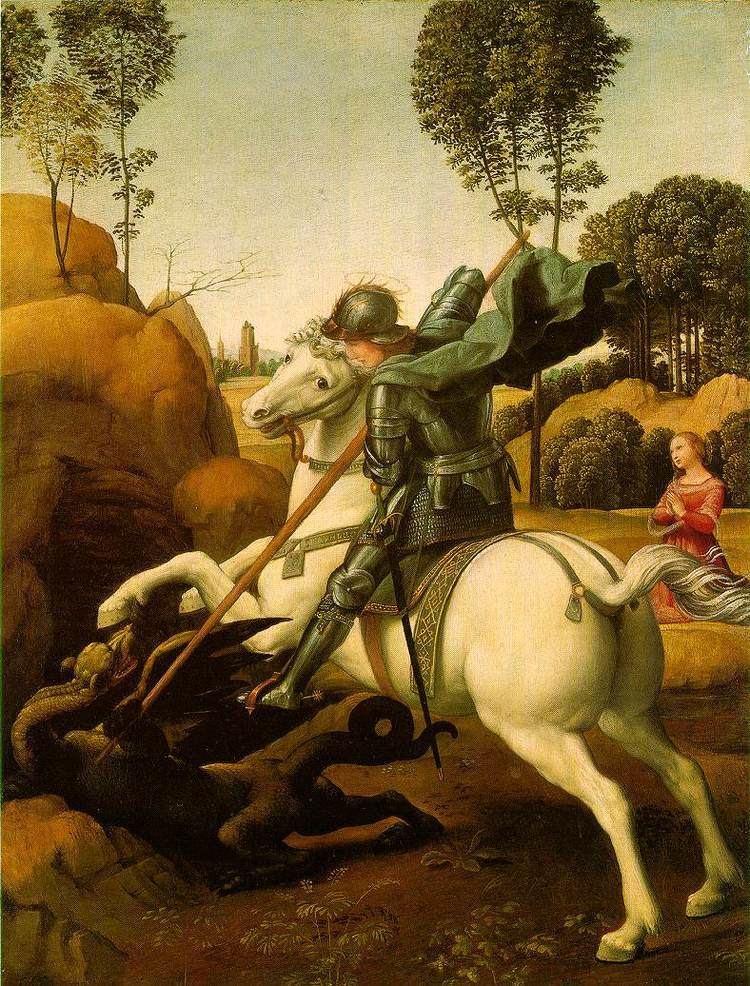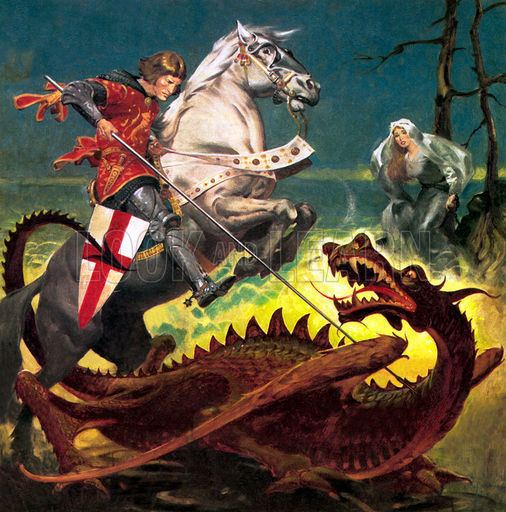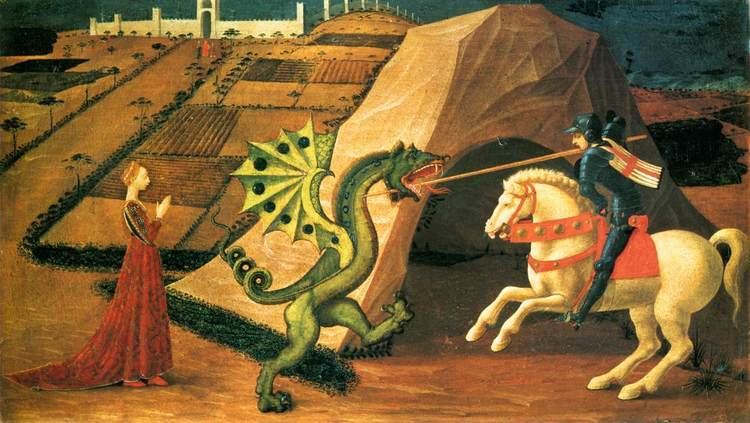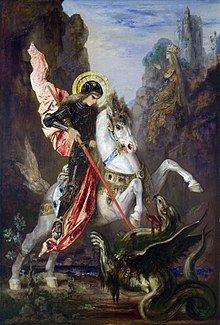 | ||
Saint george and the dragon
The episode Saint George and the Dragon appended to the hagiography of Saint George was Eastern in origin, brought back with the Crusaders and retold with the courtly appurtenances belonging to the genre of Romance. The earliest known depictions of the motif are from 10th- or 11th-century Cappadocia and 11th-century Georgia; While the veneration of Saint George as a soldier saint goes back to the 7th century at least, the earliest known surviving narrative of the dragon episode is an 11th-century Georgian text.
Contents
- Saint george and the dragon
- Legend
- Medieval iconography
- Renaissance
- Early modern and modern art
- Coats of arms
- References

In Western tradition, the dragon was combined with the already standardised Passio Georgii in the second half of the 13th century, first in Vincent of Beauvais' encyclopedic Speculum Historiale and Jacobus de Voragine's Golden Legend (1260s), rising to great popularity as a literary and pictorial subject in the Late Middle Ages. The legend gradually became part of the Christian traditions relating to Saint George and was used in many festivals thereafter.

Legend

According to the Golden Legend, the narrative episode of Saint George and the Dragon took place somewhere he called "Silene", in Libya; the Golden Legend is the first to place this story in Libya as a sufficiently exotic locale, where a dragon might be found. In the tenth-century Georgian narrative, the place is the fictional city of Lasia, and the idolatrous emperor who rules the city is called Selinus.

The town had a small lake with a plague-bearing dragon living in it and poisoning the countryside. To appease the dragon, the people of Silene fed it two sheep every day. When they ran out of sheep they started feeding it their children, chosen by lottery. One time the lot fell on the king's daughter. The king, in his grief, told the people they could have all his gold and silver and half of his kingdom if his daughter were spared; the people refused. The daughter was sent out to the lake, dressed as a bride, to be fed to the dragon.

Saint George by chance rode past the lake. The princess tried to send him away, but he vowed to remain. The dragon emerged from the lake while they were conversing. Saint George made the Sign of the Cross and charged it on horseback, seriously wounding it with his lance. He then called to the princess to throw him her girdle, and he put it around the dragon's neck. When she did so, the dragon followed the girl like a meek beast on a leash.
The princess and Saint George led the dragon back to the city of Silene, where it terrified the populace. Saint George offered to kill the dragon if they consented to become Christians and be baptised. Fifteen thousand men including the king of Silene converted to Christianity. George then killed the dragon, and the body was carted out of the city on four ox-carts. The king built a church to the Blessed Virgin Mary and Saint George on the site where the dragon died and a spring flowed from its altar with water that cured all disease.
Medieval iconography
The oldest icons depicting the saint as a horseman killing the dragon date to the 12th century. Older (11th-century) icons from Georgia (Labechina, Ipari) show George as a horseman slaying a human enemy rather than a dragon. The motif becomes popular especially in Georgian and Russian tradition, but it is also found in Greek icons (where the earlier mode of depiction of George as a soldier on foot and without the dragon remains more common). The saint is depicted in the style of a Roman cavalryman in the tradition of the "Thracian Heros".
In Russian tradition, the icon is known as Чудо Георгия о змие, i.e. "the miracle of George and the dragon". The saint is mostly shown on a white horse, facing right, but sometimes also on a black horse, or facing left. The princess is usually not included. Some icons show George killing the dragon on foot. Another motif shows George on horseback with the youth of Mytilene sitting behind him.
Icons of Saint George killing the dragon on foot:
The motif of Saint George as a knight on horseback slaying the dragon first appears in western art in the second half of the 13th century. The tradition of the saint's arms being shown as the red-on-white St. George's Cross develops in the 14th century.
Renaissance
Early modern and modern art
Paintings
Sculptures
Mosaic
Engravings
Prints
